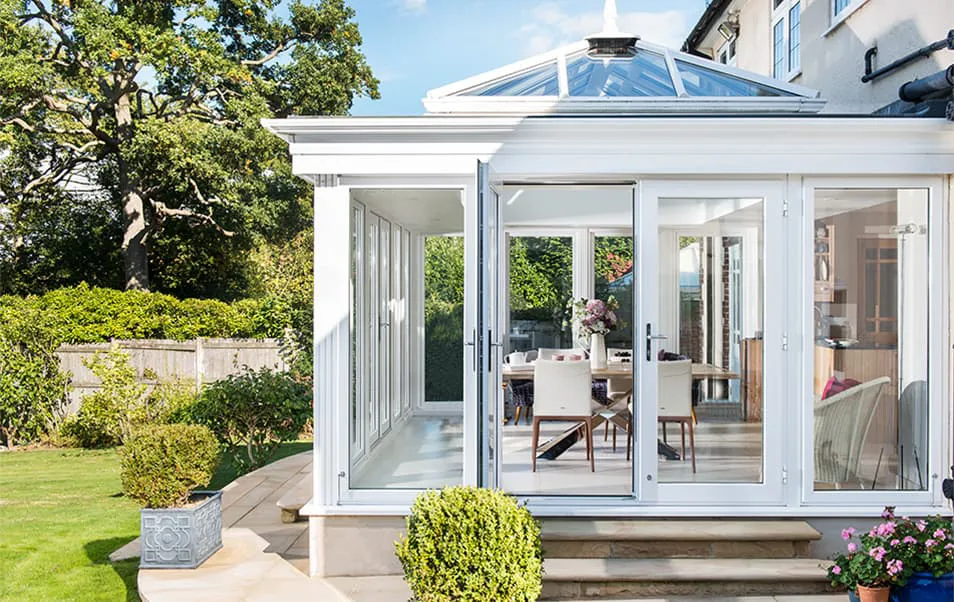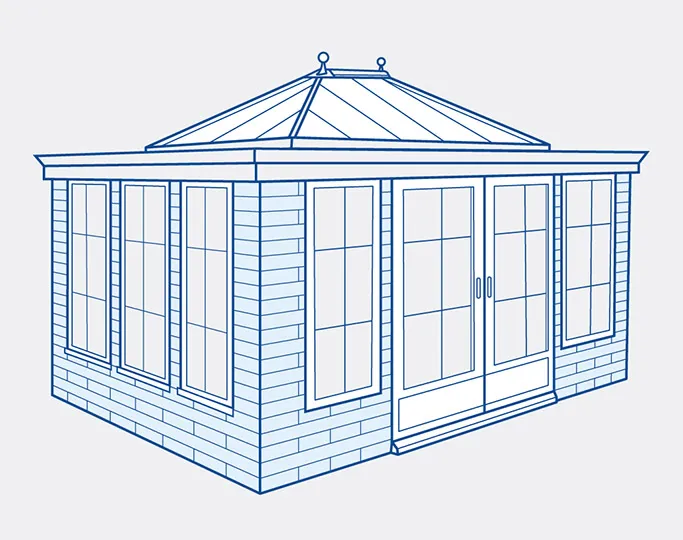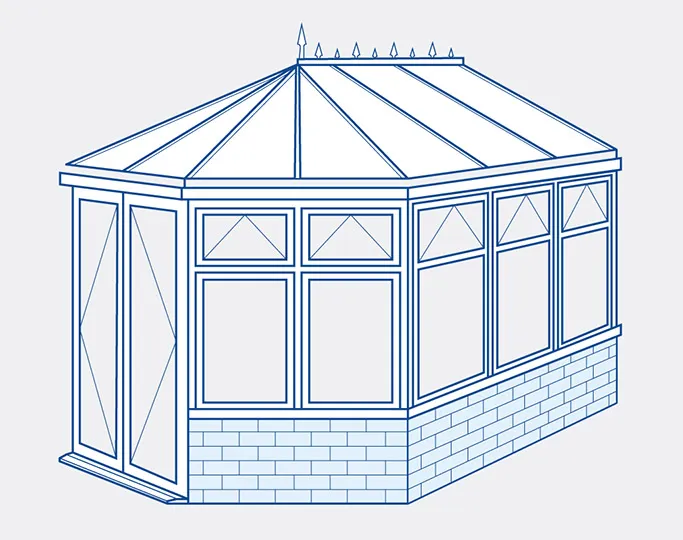The most common questions we're asked about conservatories are "What is the difference between a conservatory and an orangery?" and "What is an orangery?"
A conservatory is a glass structure with a brick base and a pitched glazed roof.
An orangery is a brick structure with large windows and a glass lantern.
To really understand the subtle differences between a conservatory and an orangery we need to understand how conservatories developed from orangeries. To do that, we go back to when large glazed windows were used to maximise sunlight.

The history of orangeries
In Renaissance Italy and in Holland, the development of glass technology allowed the production of large expanses of clear glass. Because of this, large glass windows could be constructed, for the first time.
Taking advantage of large window technology, solid structures could be built to maximise light and benefit from sunlight. In 17th century northern Europe, buildings with large windows appeared that enabled citrus fruits and exotic plants to grow protected from the winter cold.
These buildings were constructed from brick or stone and had a solid north-facing wall to protect against the cold and a stove to keep them warm. The tall windows were positioned south-facing to maximise sunlight and usually had wooden shutters to retain heat at night.
The original orangeries in the 17th century had solid roofs, but in the 19th century began to feature the central glazed lantern to allow more light to flood in.
Although they originated as a practical means to cultivate fruits, the orangery quickly became an ornate status symbol trend featuring impressive architecture. Wealthy owners of grand houses and estates would delight in showing off the ornate architecture and the collection of exotic plants they owned.













